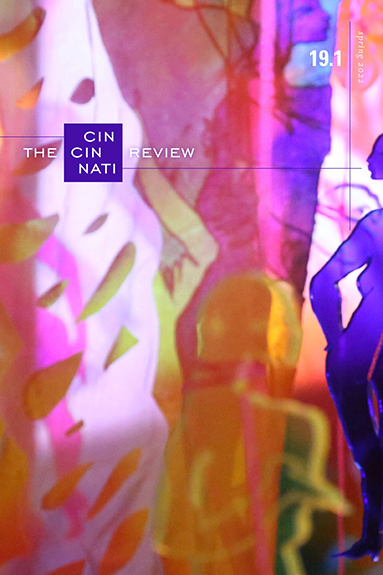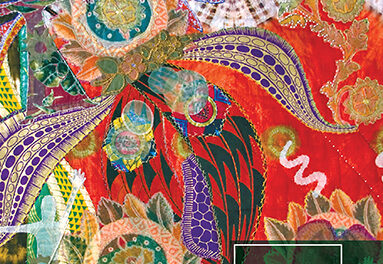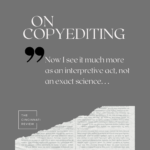We are pleased to share this review by Destiny O. Birdsong about an episode of Fatal Attraction, which appeared in Issue 19.1 as part of a special multigenre review and essay feature on the ethics and craft of crime writing (read the entire feature here):
Fatal Attraction. Season 7, episode 15. “Wrong Turn.” Chad Cunningham, dir. Aired April 16, 2018 on TV One.
I’ve always been fascinated with violent stories. As a kid, I satisfied that curiosity with books about historical events: the Holocaust, the death of Bonnie and Clyde, and the assassination of Malcolm X, to name a few. My mother, uncles, and aunts laughed it off as one of the quirks that came with having a “smart kid” in the family. “A regular bighead,” my Uncle Carlos would joke as I read volumes about the Third Reich. But the truth was that as a young Black girl, and one with albinism to boot, I was already aware of my hypervulnerability to violence, and I was deeply interested in finding out what pushed people to it. More importantly, I was beginning what would become a personal literary practice of inquiry into the liberties people take with other people’s bodies when the assailants feel that they outnumber the vulnerable, that the victims are expendable, and that the perpetrators can get away with anything.
Later, as a college student living on my own for the first time with my very own cable box in my very own room, I turned to true-crime docuseries: American Justice and Cold Case Files, both narrated by the eerily soothing voice of Bill Kurtis, or City Confidential, which featured sensational crime stories laced with local lore. I’d fall asleep to the graphic details of homicides and wake from harrowing dreams, but still, I watched.
These days, as a survivor of both racial and sexual violence, I’m a bit more squeamish about digesting a constant loop of murder and loss. In fact, as a writer who most recently revisited my own sexual assault in my debut poetry collection, Negotiations (Tin House, 2020),I sometimes need a break from thinking about humans’ capacity to commit—and survive—harm, even though I consider such work to be the most important I may ever do. Now, in my off time, I’m much more likely to work out or deep condition my hair during a Living Single bloc, or to dress for bed while singing Finally Aaron’s gospel remix of “Thank You for Being a Friend” while the original plays on my bedroom TV, promising me another half hour of Blanche, Dorothy, Rose, and Sophia. But I’ve also discovered a compelling true-crime show on TV One, a cable-access channel whose programming is geared specifically toward African Americans. Fatal Attraction is exactly what it sounds like: true stories of relationships that end violently. (A quick note of disambiguation: I was also once a fan of an Animal Planet series called Fatal Attractions, which is about people’s deadly love affairs with exotic and dangerous pets. I highly recommend the episode “A Tiger Loose in Harlem.” The title doesn’t do it justice. Just . . . watch it.)
TV One’s Fatal Attraction is both campy and heartbreaking. Even as a diehard crime TV junkie, I’ve never heard of most of the cases, which is rare for someone who can recall historical crimes with an efficiency that bemuses my closest friends. (I have trouble remembering their birthdays, but I know the name of the woman who revolutionized medicine packaging when she killed her husband and tried to blame it on a tampered bottle of Tylenol: Stella Nickell.) Arguably, I don’t know about these other incidents because of phenomena described by statistics that the show itself shares during commercial breaks: for instance, less than half of homicides involving African American victims are solved, and missing persons are disproportionately Black women, who are hardly ever found. Ongoing conversations about “the missing white woman syndrome” make clear that most news outlets don’t give missing Black women nearly as much attention as their Caucasian counterparts. Thus, few places outside Black cable-access channels feature the kinds of cases Fatal Attraction presents, despite the fact that the crimes themselves are as horrifying as ones featured on any newsmagazine show.
I am often appalled by the details. There are women like Darice Knowles, who was buried alive by a former lover in 2006, or Tynesha Stewart, whose boyfriend strangled and dismembered her in a bathtub in 2007 because she’d gone off to college and begun a new relationship. The details are graphic, the family members’ accounts of their lost loved ones heart-wrenching, and yet I am rarely surprised. Both the little girl I was and the woman I’ve become have long known what is possible for Black women to experience at the hands of the depraved.
However, my deep appreciation for Fatal Attraction and the important work it does to raise awareness about violence in Black communities doesn’t mean I don’t have my critiques. There are terrible wigs, hammy actors, and kissing scenes that look painful for all parties involved. But one day, while I was lying on the couch, most likely procrastinating on some writing deadline, I saw something much more serious: an episode in which the show’s misrepresentation of the victim erased her identity, thus flattening the narrative of a complex and tragically short life. Even more frightening was that this woman looked like me.
Season 7’s episode 15, “Wrong Turn,” tells the story of Asia Harris, a twenty-year-old Cleveland native who was gunned down in her car during what her husband said was an armed robbery. It turned out to be a murder-for-hire paid for by Harris’s husband and committed by his cousin’s boyfriend, because Asia wanted a divorce. She’d fallen in love with someone new. As her family points out, Asia was a mother, a caregiver, and someone who often stood up for underdogs, a practice that dated back to her high-school years when she met her future husband, Sam Wilson, a shy, friendless kid whom she dated briefly. She ultimately ended their relationship then because he was possessive and needy. Asia was popular and had a clear sense of what she wanted, with few qualms about being candid. She also had albinism.
Interestingly, however, the actress playing her . . . didn’t? She, like Asia, was a beautiful Black woman, but a light-brown-skinned one donning a bright blond wig. I did a double take. Surely, I thought, there must be an actress with albinism who would have loved the opportunity to play Asia and, in so doing, offer visibility and authenticity for the rest of us? Then I wondered if the oversight stemmed from a lack of resources. After all, the running joke among Black folks is that Black television stations have ten-minute-long commercial breaks and reams of Time Life infomercials so ubiquitous that most of us can sing along with the featured tracks. For years, many large advertising companies did not place ads with Black media outlets, something that has started to shift only in the wake of 2020’s civil protests. Fewer ad sales mean that outlets must sell more ad slots, which makes commercial breaks longer.
However, the shortcomings of this episode are about more than a lack of resources; rather, they are a failure of the imagination of the writers and producers, a failure that robs Asia of a full telling of her life and death. The narrator’s descriptions of Asia differ drastically from those of her loved ones and from how the show generally characterizes other victims. Asia’s family members and former classmates describe her as desirable, a trendsetter, someone who turned heads. “When she walked into the room, it was like, everyone wanted to be around her,” recalls Kelly Stockdale, a high-school friend. However, the narrator uses terms that are quite different, unlike the “gorgeous,” “stunning,” and “exquisite” victims in other episodes. Instead, Asia is “fearless”; she “never let her unique appearance or the teasing it generated define her.” I can’t recall one instance of the narrator ever calling her “beautiful.” This hyperfocus on Asia’s strength and savvy creates a false sense of impossibility for people in non-normative bodies, telling us that we can be everything except aesthetically pleasing.
Such slights—both unintentional and otherwise—remind me that Black women with albinism are often lost in the shuffle of representation. Even in spaces designed to champion diversity and highlight beauty, we are overlooked. Sometimes it feels selfish to say that as part of our communal recalibration of what it means to be Black and beautiful, I want more space for women who look like me: pale-skinned, blond, and sometimes even blue-eyed. But I do, because my absence in conversations about Blackness and Black vulnerability reifies the same essentialist notions that support racism and its concomitant violence. Blackness is more than a set of phenotypes, and people with albinism are more than just their condition.
It also feels ludicrous to say that I want to see women like me given our due space in a genre like crime TV, but perhaps what I mean is that I want to see versions of myself portrayed in the messy fullness of life. I want space for real conversations about men who see Black women as disposable simply because they dared to move on, but also about how women with albinism are tokenized, fetishized in ways that are specific to our difference.
According to the episode, Sam Wilson proposed to Asia because he believed he was doing both her and himself a favor: as a mother of two, Asia benefited from the financial support that came with being an army wife, and Sam’s increased pay and permission to move off base as a married man offered him perks he could not have received otherwise. But Asia had the audacity to change her mind, to seek more, and ultimately to refuse the offer of stability without love. That audacity is a subject I tackled in my novel, Nobody’s Magic (Grand Central, 2022), a triptych about three women with albinism who must navigate complicated familial, racial, and social histories in the wake of life-changing events. Suzette, Maple, and Agnes are each faced with a choice to live a life someone else designed for them (sometimes with the best of intentions), and in each instance, they say “No.” All three set out in search of something for themselves, but more importantly, each finds people who see them as more than charity cases or individuals to be pitied. To treat people with albinism as such is also a kind of violence, one that “Wrong Turn” participates in through its casting and narration that fail to portray Asia in the full reality of her life.
As an artist, I’ve come to understand that my autonomy is not at risk just because I am Black, or a woman, or queer, or single, or childless (with the intention to be so for at least the next few years), but also because I am different, because I defy expectations. Because I demand what people have determined that I do not deserve. In creating Suzette, Agnes, and Maple, and making them flawed but fearless and strong, just like Asia, I wanted to deepen the conversations I have been having about violence, about vulnerability, and about survival. Sometimes, it feels too overwhelming to tackle those topics in one story, so I understand why people are prone to glossing over them. But to sit in the seeming discomfort of discussing difference is cultural work that benefits us all, that makes room for even more nuanced stories about all kinds of people, not just those with albinism. My hope is that by telling stories like my own, like the characters’ of Nobody’s Magic, similar portrayals will proliferate elsewhere in our culture. I’m confident that one day soon I will be able to turn on the television or walk into a movie theater and see another Black woman with albinism telling whatever story she chooses and portraying herself in whatever way she sees fit. Or, if she cannot speak for herself, I hope that the powers that be render her in her fullest detail, glossing nothing but keeping everything and, dammit, calling her beautiful.
Destiny O. Birdsong is a poet, novelist, and essayist. She is the author of the poetry collection Negotiations (Tin House, 2020), which was longlisted for the 2021 PEN/Voelcker Award, and the triptych novel Nobody’s Magic (Grand Central, 2022).










